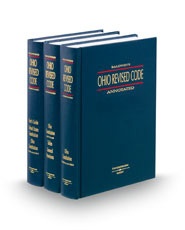Introduction
You may want to a use trusts for a multitude of reasons, including, but not limited to, avoiding probate, maintaining control of assets after death, and tax minimization. One of the more crucial reasons for you to use a trust is to allow for flexible property management. The use of a trust to manage property is prudent when there are laws and regulations in place that limit the ownership, sale, and transfers of that property. This holds especially true when dealing with firearms. This post will discuss (a) some of the issues that the use of firearm trusts may address; (b) the relevant laws and regulations surrounding firearms; (c) what a firearm trust is; and (d) recommendations for planning for an estate that includes firearms.
What Issues Can Firearm Trusts Address?
Probate administration is an invasive process where the court makes much of your family’s private information public. The types and values of the guns subject to probate administration are part of the public record. Furthermore, if your firearms are part of the probate estate, then the parties receiving the firearms will be reflected in the public. Often, this information is available online. If you create a firearm trust, you can avoid the specifics of your firearm collection from becoming public knowledge and the recipients of the same.
Control of your firearms after death may be important considering the felonious implications of certain criminals and non-citizens possessing certain firearms. Those implications may make it difficult for you to legally transfer certain firearms to your heirs and beneficiaries, particularly when you do not know everything about their pasts. By creating a firearm trust, you can address that uncertainty.
In that same vein, under the current laws and regulations surrounding firearms, you may avoid certain regulatory requirements for the transfer of firearms at your death by putting your firearms into a firearm trust. For example, a transfer tax associated with the transfer of certain firearms may be avoided.
Generally, outright possession of a firearm limits possession to single individuals. However, if you create a firearm trust, one of the many results is flexibility of ownership. For example, if you name multiple co-trustees to the firearm trust, then those co-trustees may each enjoy the use of the firearms in the firearm trust. By knowing the laws and regulations, a competent estate planner should be able to take advantage of the many benefits provided by firearm trusts.
What Are the Laws and Regulations Surrounding Firearms?
There are many laws and regulations regarding firearms in the United States. Generally, in accordance with the principles of federalism, states pass their own laws and regulations regarding firearms. However, the federal government has its own firearm laws and regulations, including, but not limited to, the Gun Control Act of 1968 (the “GCA”); the National Firearms Action of 1934 (the “NFA”); and the various regulations implemented by the Bureau of Alcohol, Tobacco, Firearms, and Explosives (the “ATF”).
Congress passed the GCA in response to the assassinations of John F. Kennedy and Dr. Martin Luther King Jr. The GCA is composed of Title I and Title II. Title I of the GCA addresses most firearms in the United States, including shotguns, rifles, and handguns. Despite being under the GCA, Title I Firearms are not largely regulated by the federal government, unless those Title I Firearms enter interstate commerce.
The federal government’s abilities to regulate Title I Firearms in interstate commerce are addressed in Bezet v. United States, 714 F. App’x 336 (5th Cir. 2017). The Bezet Court found that the federal government may regulate, through the Commerce Clause, the importation of certain firearms and ammunition, and the use of certain imported parts in the assembling of firearms. Furthermore, in Bezet, the GCA withstood intermediate scrutiny because Congress enacted the provision of issues with the important government objective of “buttress[ing] states’ individual efforts to curb crime and violence” through a “comprehensive national response.” Using the same logic, the Bezet Court found that the federal government did not infringe on any Second Amendment rights because the law did not completely prevent consumers from obtaining firearms. The consumers merely had to overcome certain hurdles. So, while the GCA may not impose many federal restrictions on firearms, it still has teeth.
Title II of the GCA “revises and incorporates provisions of the original NFA,” which Congress passed, under the Taxing Powers, in response to the organized criminal activity of the early twentieth century. In its original form, the NFA governed the possession and sale of certain firearms and taxed the manufacturing and sale of said firearms. The firearms regulated under the NFA were, and still are, accounted for under Title II of the GCA. Consequently, the firearms that fall under Title II of the GCA (i.e., machine guns, short-barreled rifles, short-barreled shotguns, suppressors, and other destructive devices) have been deemed “Title II Firearms.”
The original NFA regulations on the manufacturing and transferring of Title II Firearms included requirements like (a) filing an application with the ATF; (b) paying a $200 stamp tax; (c) providing fingerprints; (d) providing photographs; (e) undergoing background checks; and (f) seeking approval from a Chief Law Enforcement Officer (“CLEO”). Some of these original regulations did not apply to trusts, so estate planners and their clients started using the “Firearm Trust Loophole” as means to circumvent some of the NFA’s regulations. For example, estate planners and their clients used firearm trusts to bypass the fingerprinting and CLEO approval requirements. In lieu of those regulatory requirements, the ATF tasked the federal government with the job of verifying and investigating applications. The abuse of the Firearm Trust Loophole came to a head in 2013 to 2014, where trustees and officers of other entities filed over 160,000 Title II Firearm applications, none of which were subject to the close scrutiny imposed on individuals by the ATF. In response to this, The ATF closed the Firearm Trust Loophole by implementing Rule 41F, in 2016.
The ATF does many things regarding the federal regulation of firearms. For example, the ATF provides guidance as to which types of firearms will fall under the NFA. Likewise, the ATF helps to enforce various federal firearm regulations. However, one of the more critical roles of the ATF is to create federal firearm regulation through notice and comment rulemaking, as seen with Rule 41F.
The ATF’s reasoning for Rule 41F was “to ensure that the identification and background check requirements apply equally to individuals, trusts, and legal entities who apply to make or receive NFA firearms.” In that spirit, Rule 41F changed the NFA in multiple ways. Rule 41F added the term “Responsible Persons” to broadly encompass entities that were not covered under the original NFA. Responsible Persons specifically refers to partnerships, associations, companies, corporations, and trusts. Furthermore, Rule 41F did away with the requirement that a CLEO had to sign off on the manufacture and acquisition of Title II Firearms. However, Rule 41F did not entirely remove CLEOs from the picture, in that Responsible Persons, who are attempting to transfer Title II Firearms, must forward an application to a CLEO in the Responsible Persons’ domicile. In addition to those changes, the ATF created Section 479.90a of Rule 41F to regulate the unplanned possession and distribution of Title II Firearms at the owner’s death.
What is a Firearm Trust?
A firearm trust is just what it sounds like, a trust used to legally transfer and possess firearms, and avoid regulatory requirements to that effect. Firearm trusts can be used to ensure privacy, create situations where multiple beneficiaries may use the trust firearms, and ensure that firearms do not fall into the wrong hands. Despite their continued utility, firearm trusts were once special compared to other trusts in that they were considered separate entities from the trustees and the beneficiaries. However, this became less true when the ATF passed Rule 41F.
Currently, trusts are bound by the regulatory requirements regarding the acquisition, ownership, and transfer of Title II Firearms. That being the case, it is important, now more than ever, for your estate planner to understand the relevant firearm laws and regulations that may surround your firearms, and how to draft an estate plan accordingly.
How Should Your Estate Planner Draft a Trust for Your Firearms?
Because of the laws and regulations surrounding firearms, there are certain things you should consider when creating a firearm trust, including, but not limited to, the type of trust, the language in the trust, the trustees and their powers, and the beneficiaries of the trust.
Regarding the type of trust used, you should consider creating a revocable inter vivos trust. Regarding the firearm trust language, your estate planner should use terms that reference the specific firearms you own and the applicable federal and state firearm laws and regulations. Likewise, the estate planner should use language that makes clear your intent to comply with said laws and regulations. To allow for the most utility, the language of the firearm trust should ensure that the firearm trust is a stand-alone trust, not one incorporated by another trust.
Regarding naming a trustee for the firearm trust, as with any other trust, there are factors to consider. First, if dealing with a revocable inter vivos trust, you should consider naming yourself as a trustee, or co-trustee, which would allow you to benefit from the use of the trust firearms during your lifetime. Second, the trustee and the successors should be individuals who are legally capable of owning firearms (i.e., non-felons and citizens who have not renounced their citizenship). Third, you and your estate planner should consider the possibility that a trustee, who is eligible at the time the estate planner drafts your firearm trust, may later become ineligible. To remedy that issue, your estate planner should draft a provision that outlines the appropriate course of action to deal with said situation. Those provisions might take the form of treating an ineligible successor trustee as predeceasing a successor trustee, or a trust protector provision that allows an individual to elect eligible successor trustees.
Regarding the trustee’s powers, you and your estate planner should grant the trustee broad powers. The broad powers should ensure that the trustee can fill out the requisite transfer forms, be reimbursed for costs that the trustee incurs while owning and transferring firearms, and have discretion regarding if, and when, the trustee must transfer firearms to beneficiaries.
Regarding naming beneficiaries, you should name eligible beneficiaries. Likewise, you and your estate planner should come up with an alternate plan of disposition to address situations where a beneficiary might later become ineligible to legally own certain firearms. That may be done by providing a charitable remainder to certain entities that can possess and dispose of the firearms correctly. Alternatively, you could decide to leave the firearms in further trust for other beneficiaries or dissolve the trust and distribute the firearms outright.
Conclusion
The creation of a firearm trust is a responsible thing for you to do. However, if you do not plan for the disposition of your firearms, the executor of your estate is not going to be entirely without direction. The ATF created Section 479.90a of Rule 41F to guide executors of estates through the disposition of Title II firearms in unplanned estates.
Section 479.90a provides that an executor of an estate may possess a decedent’s registered firearms but must apply to transfer the firearms to the decedent’s heirs before the close of probate. In said application, the executor must, among other things, name the estate as the transferor and sign on behalf of the decedent. To avoid having to deal with uncertainty and regulatory red tape associated with unplanned estates and Section 479.90a, please feel free to contact the Finney Law Firm.
Please contact Isaac Heintz (513.943.6654) or Jennings Kleeman (513.797.2858) to discuss your estate planning needs.








